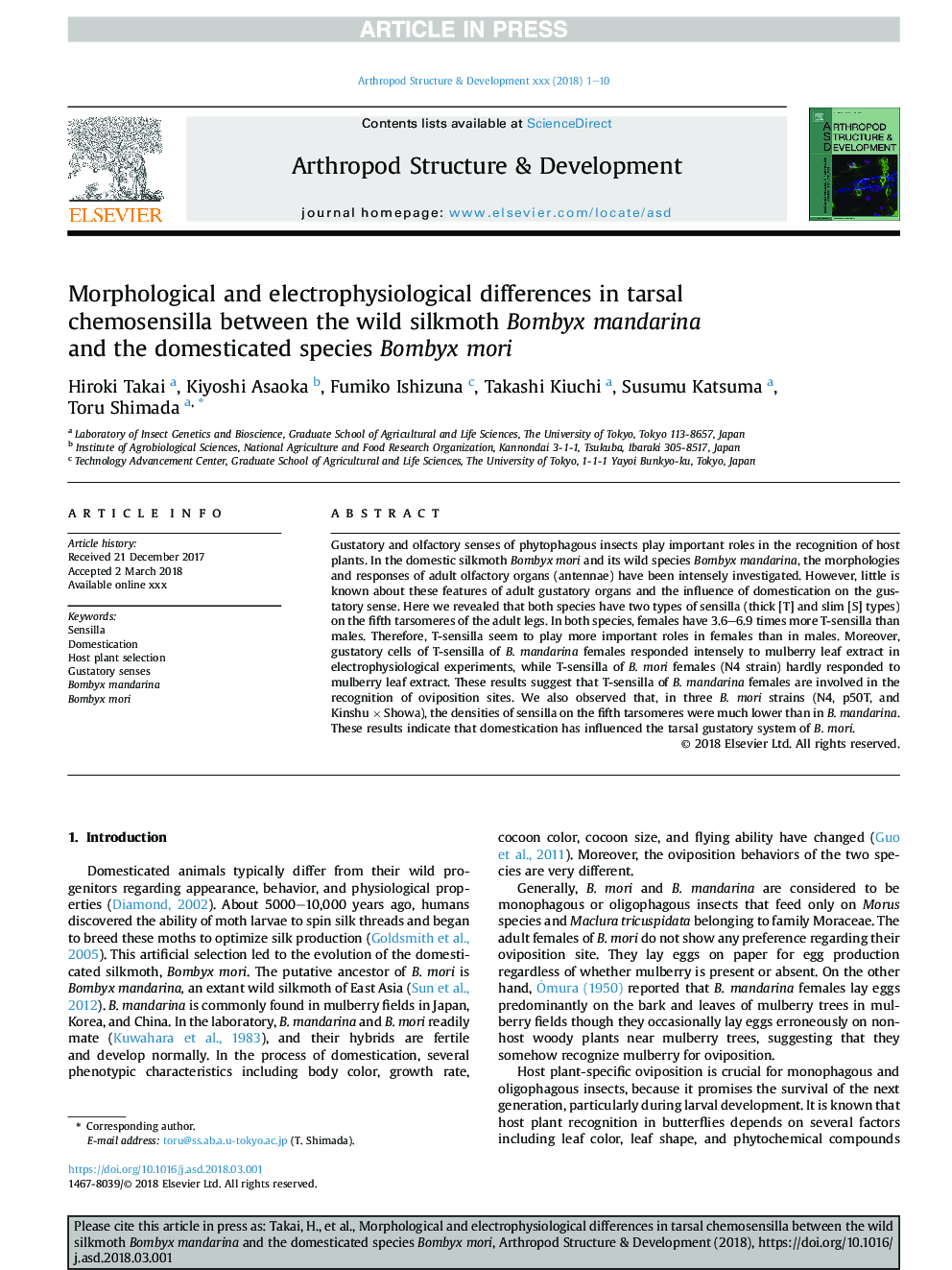| Article ID | Journal | Published Year | Pages | File Type |
|---|---|---|---|---|
| 8624681 | Arthropod Structure & Development | 2018 | 10 Pages |
Abstract
Gustatory and olfactory senses of phytophagous insects play important roles in the recognition of host plants. In the domestic silkmoth Bombyx mori and its wild species Bombyx mandarina, the morphologies and responses of adult olfactory organs (antennae) have been intensely investigated. However, little is known about these features of adult gustatory organs and the influence of domestication on the gustatory sense. Here we revealed that both species have two types of sensilla (thick [T] and slim [S] types) on the fifth tarsomeres of the adult legs. In both species, females have 3.6-6.9 times more T-sensilla than males. Therefore, T-sensilla seem to play more important roles in females than in males. Moreover, gustatory cells of T-sensilla of B. mandarina females responded intensely to mulberry leaf extract in electrophysiological experiments, while T-sensilla of B. mori females (N4 strain) hardly responded to mulberry leaf extract. These results suggest that T-sensilla of B. mandarina females are involved in the recognition of oviposition sites. We also observed that, in three B. mori strains (N4, p50T, and Kinshu Ã Showa), the densities of sensilla on the fifth tarsomeres were much lower than in B. mandarina. These results indicate that domestication has influenced the tarsal gustatory system of B. mori.
Related Topics
Life Sciences
Agricultural and Biological Sciences
Insect Science
Authors
Hiroki Takai, Kiyoshi Asaoka, Fumiko Ishizuna, Takashi Kiuchi, Susumu Katsuma, Toru Shimada,
